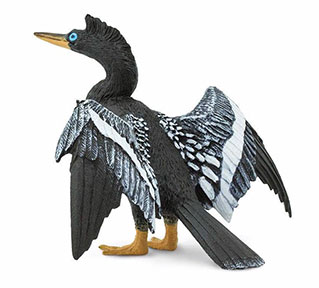


Anhingas (Anhinga anhinga) are
common in fresh-water swamps, ponds and lakes, where they spear fish. These fish-eaters dive from the surface and swim underwater. They often perch with wings half open to dry. They migrate in V-formation; usually silent. They often swim with only the head and neck exposed. Their long straight bills, long tails, and white wing and back plumes are traits that differentiate them from cormorants. They are usually seen singly, but may be seen soaring very high in flocks. Anginga's are about 28 inches long and have a wingspan of 47 inches.
These birds breed in mixed colonies with herons or cormorants. They will build their own nest from sticks or make use of the old nest of another bird such as a small egret. The nest is found in a tree or bush by fresh or brackish water or salt water. The clutch size is from 3 to 6 chalky white eggs. Both male and females share incubating the eggs. Incubation period is about 26 days.
Anhingas occur worldwide in tropical and subtropical regions. The Anhinga figurine shown above is available at our sponsor's online gift shop.
Order: Pelecaniformes | Family: Anhingidae | Species: Anhinga anhinga



